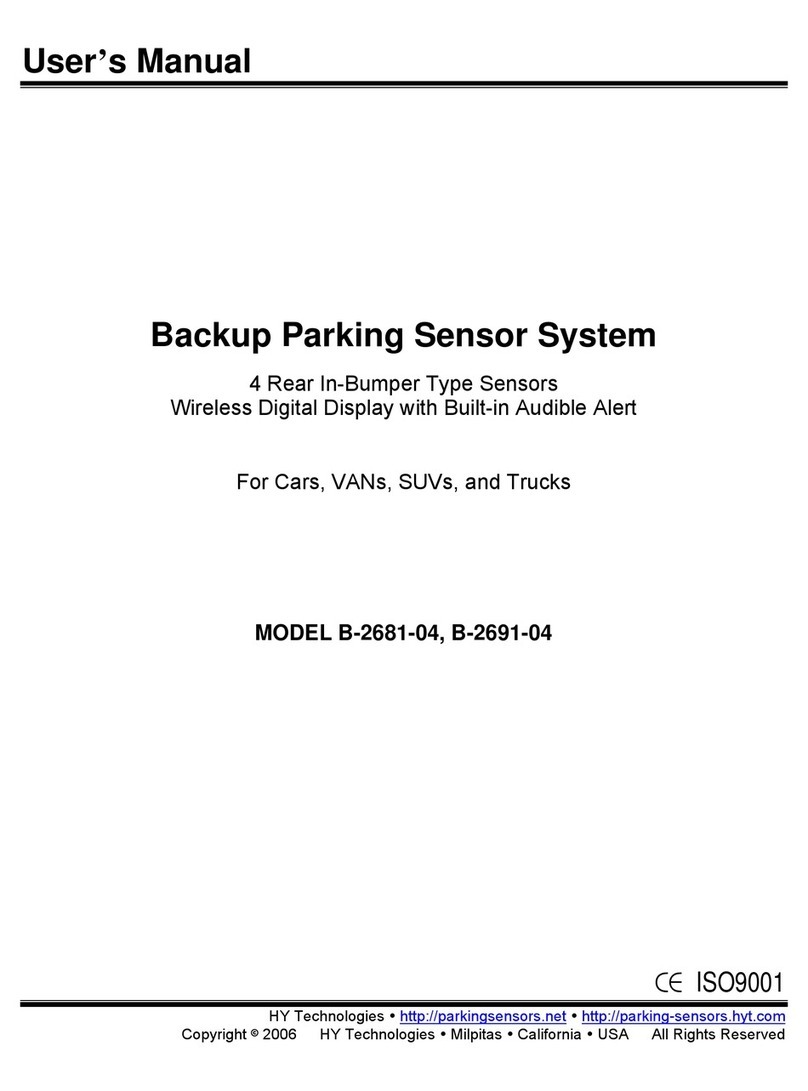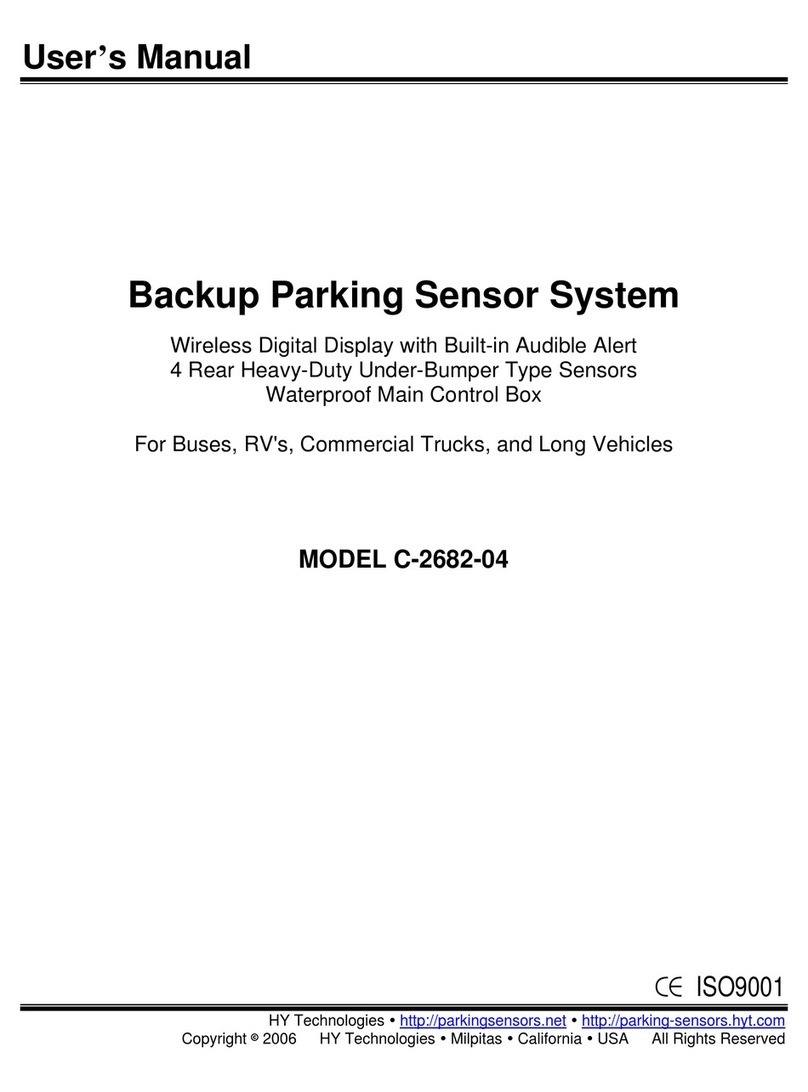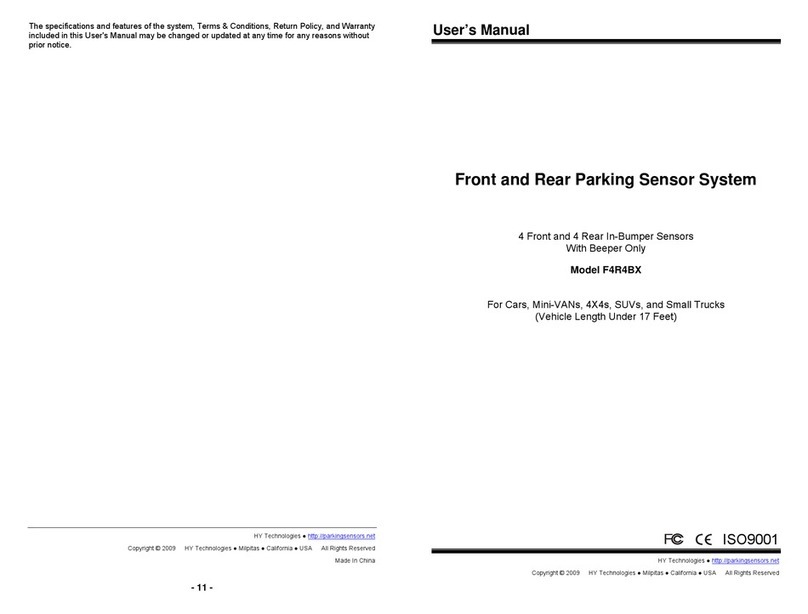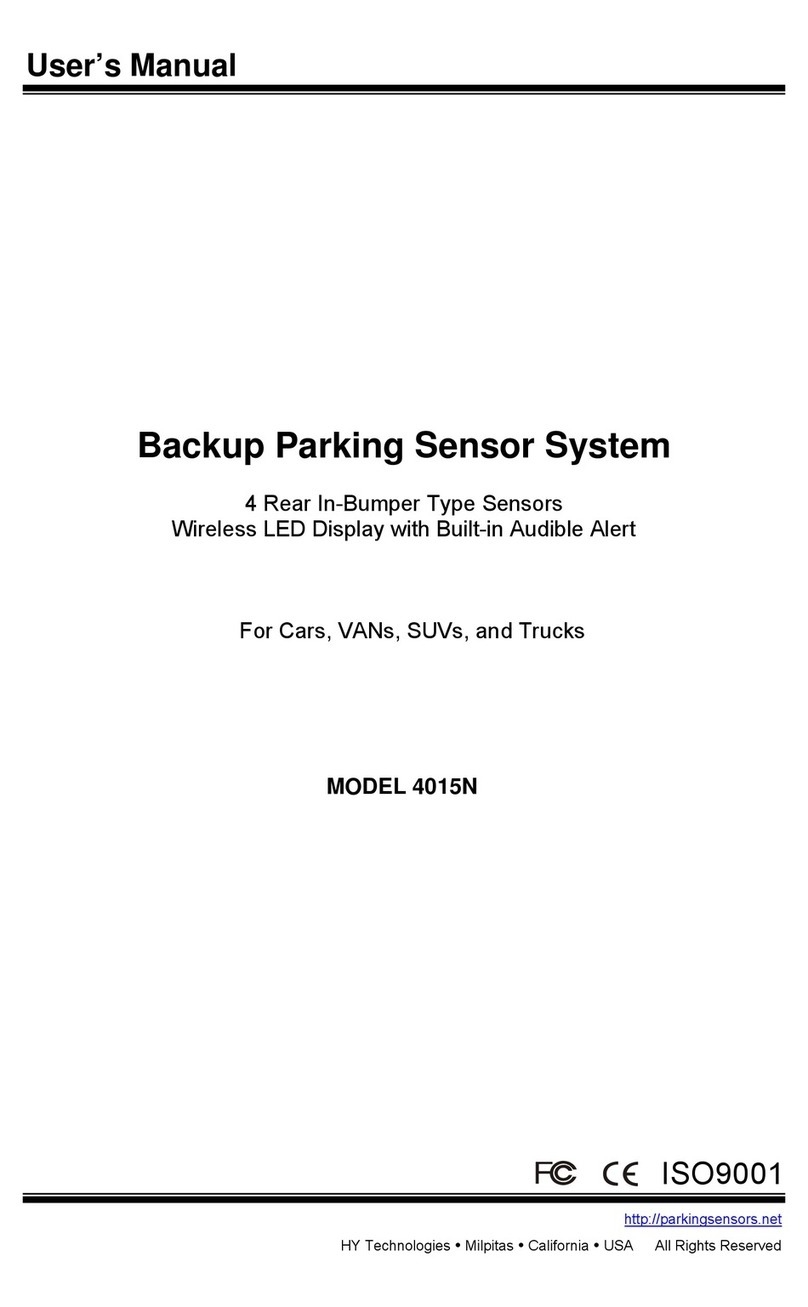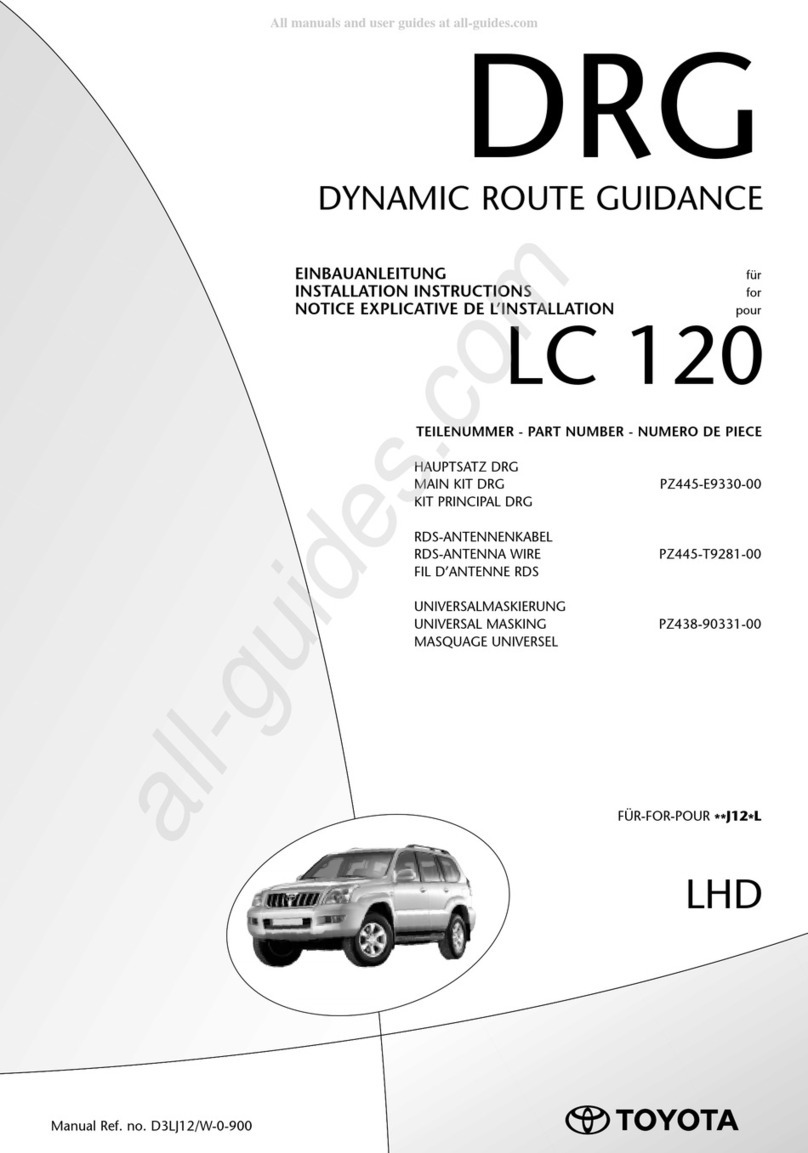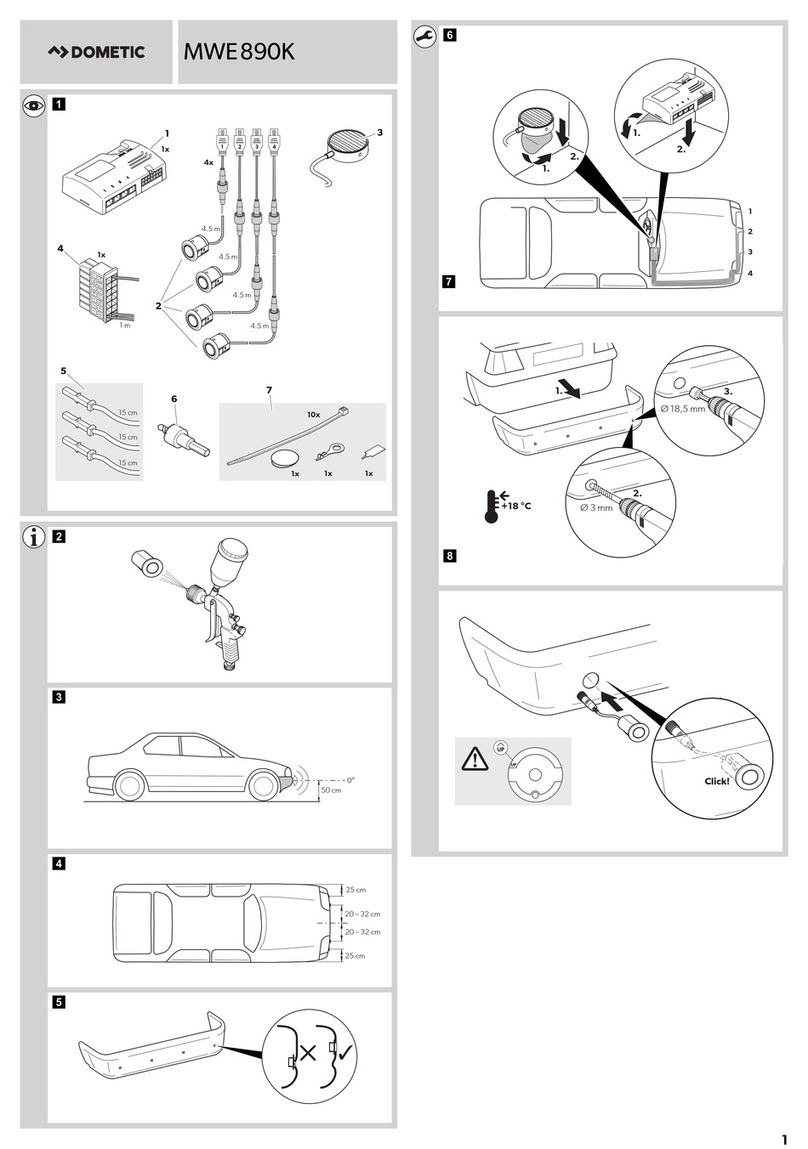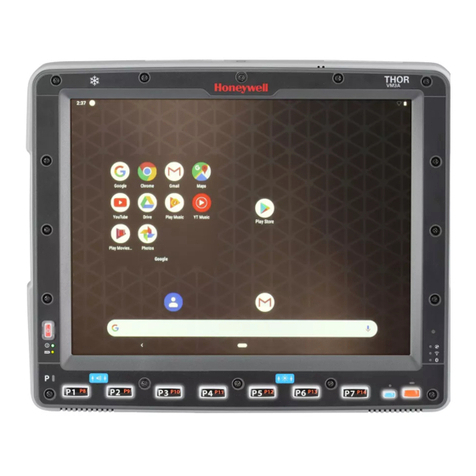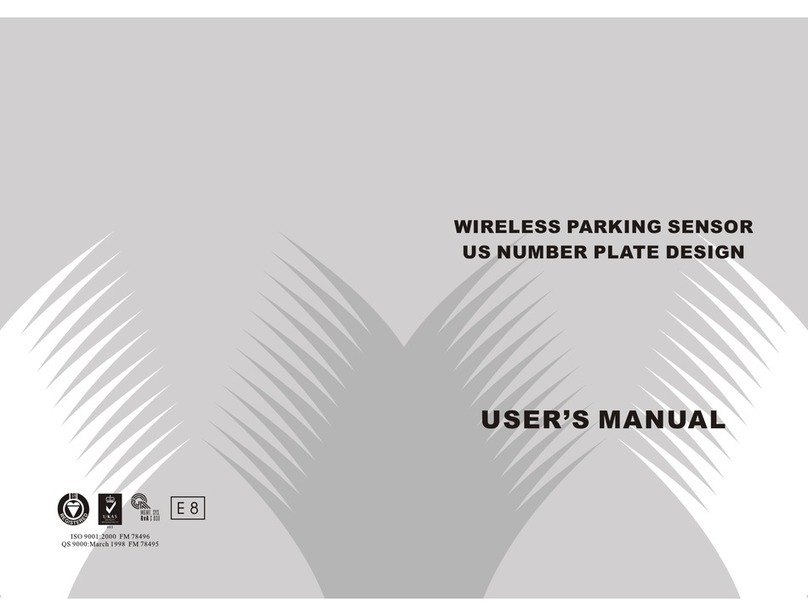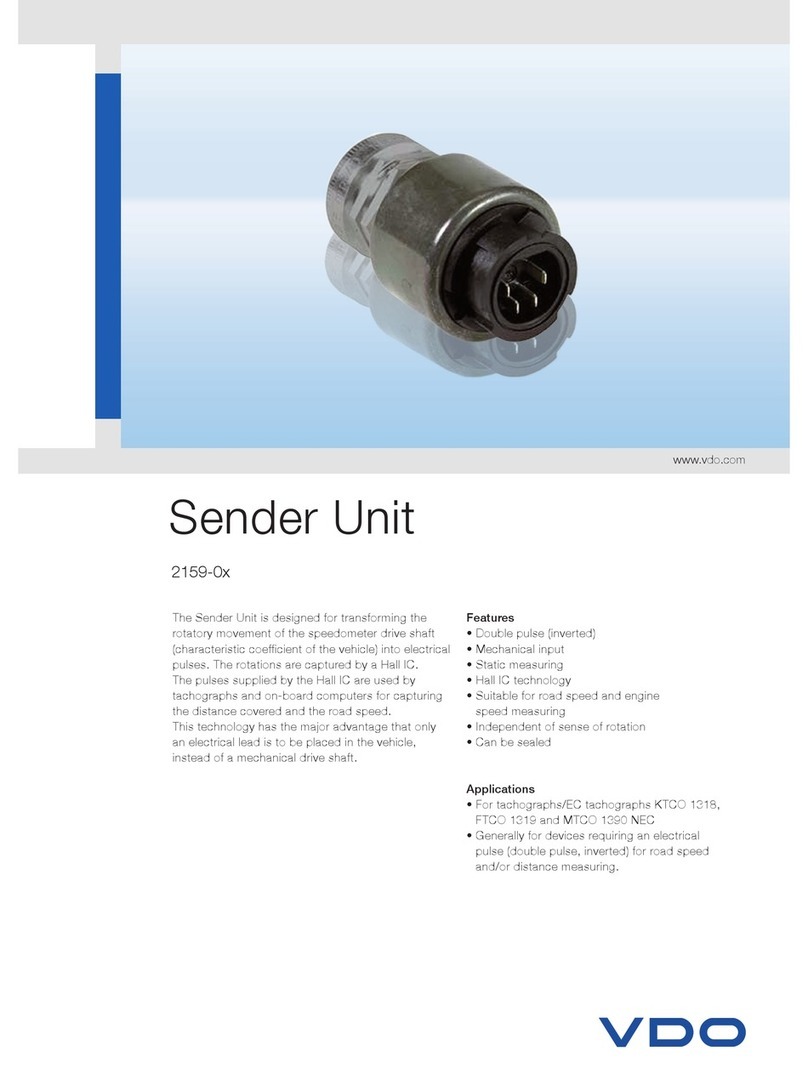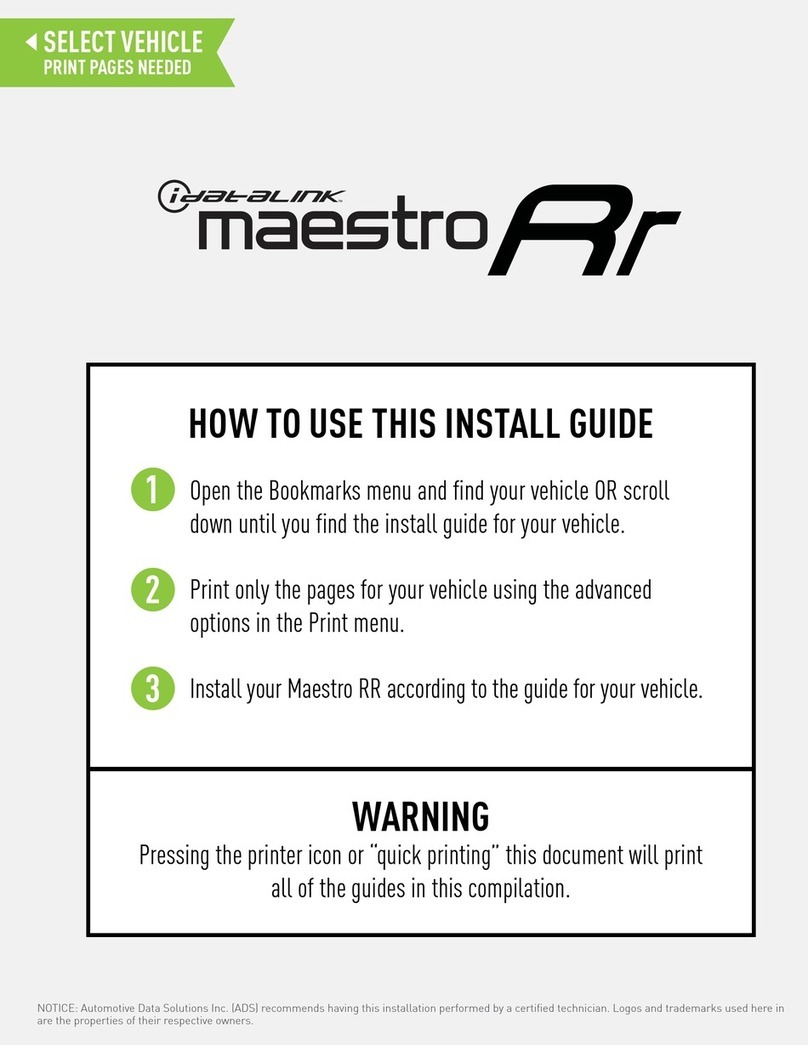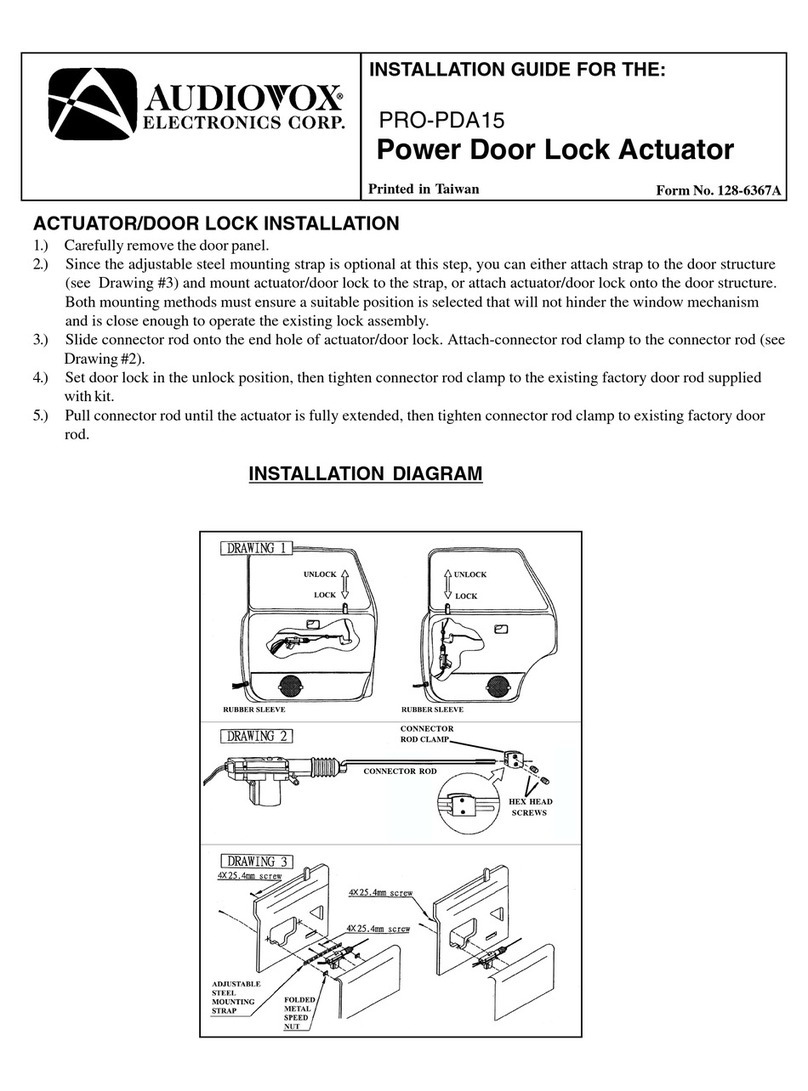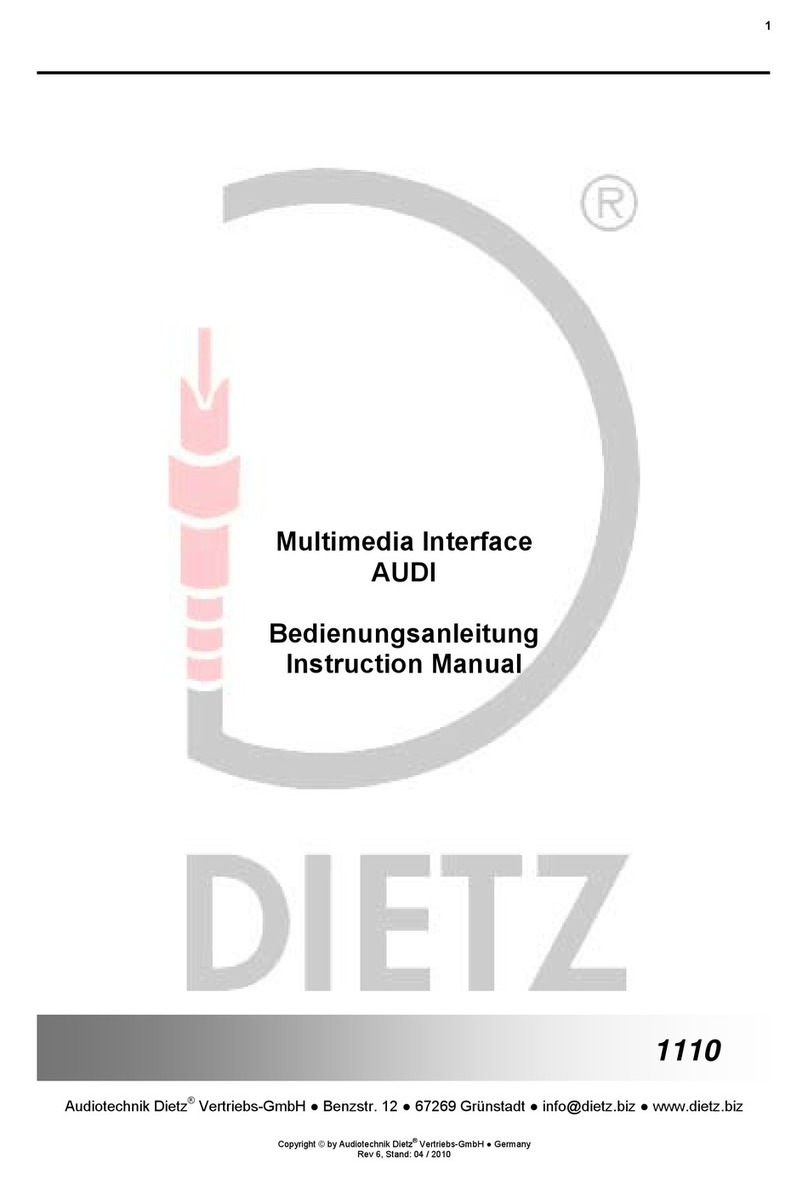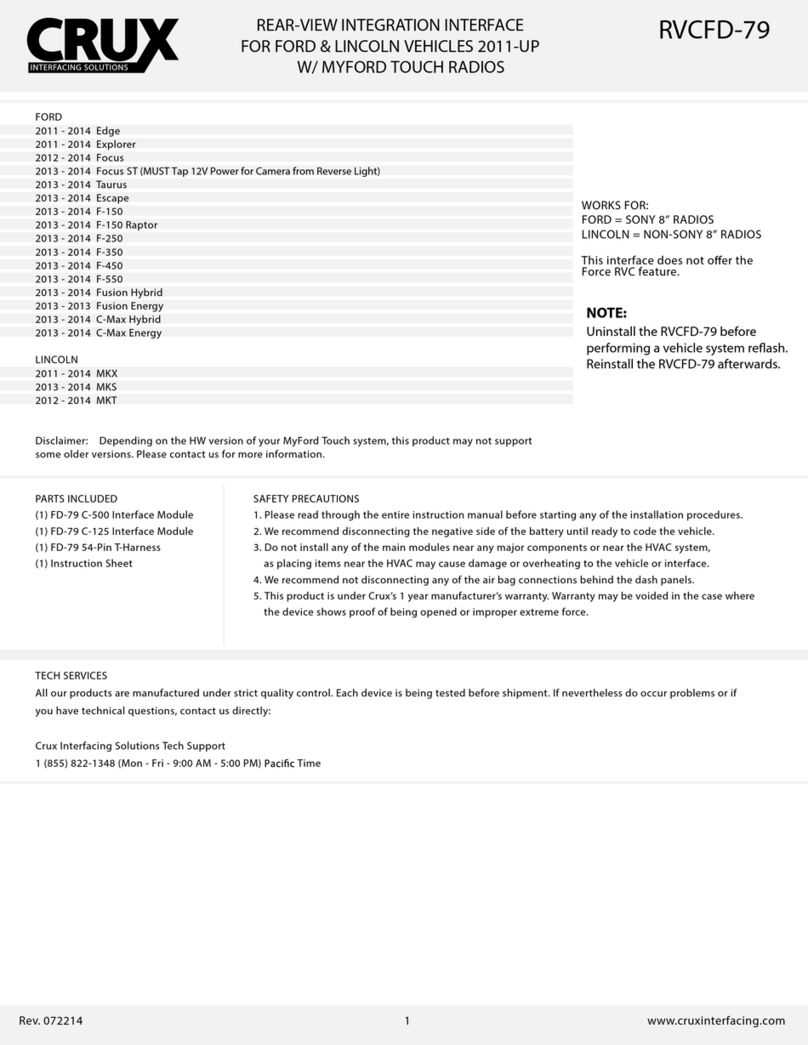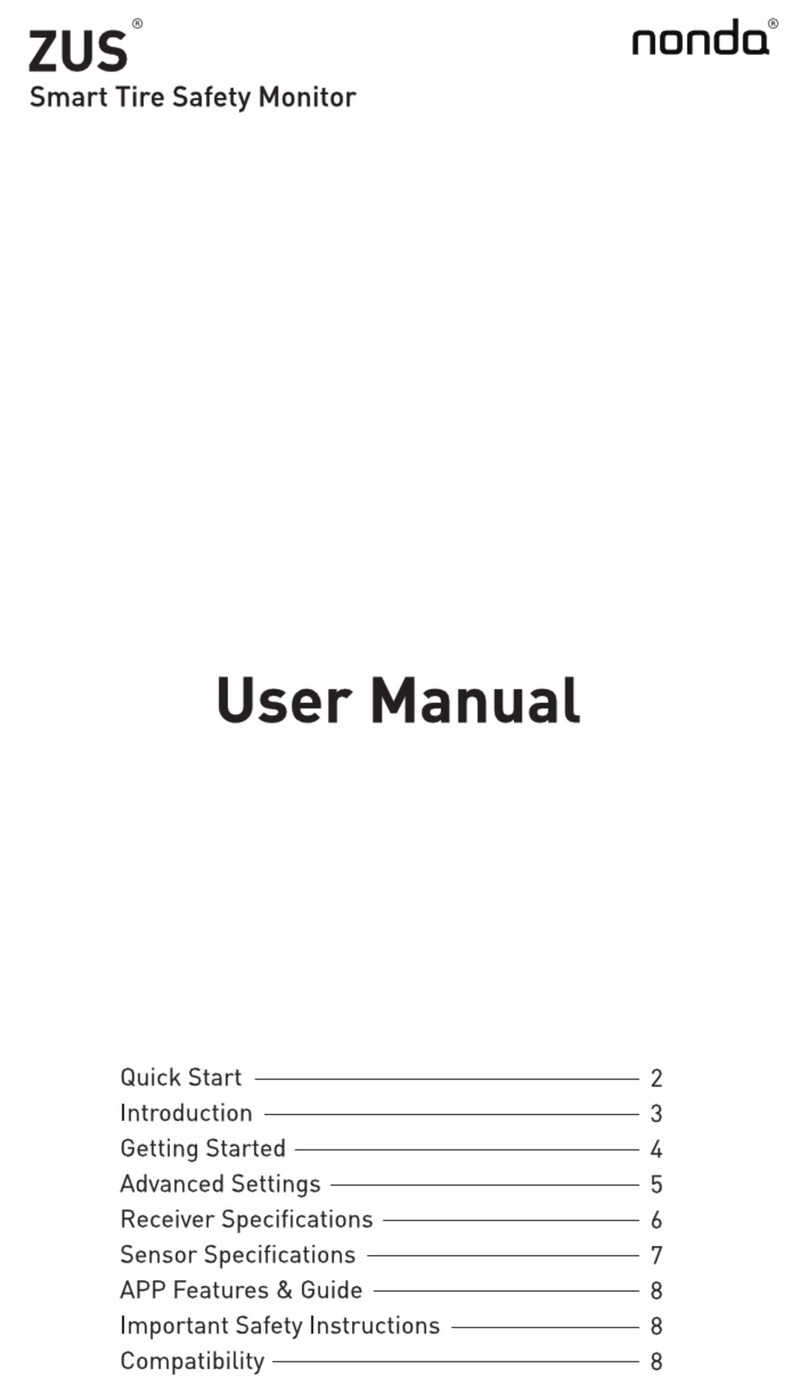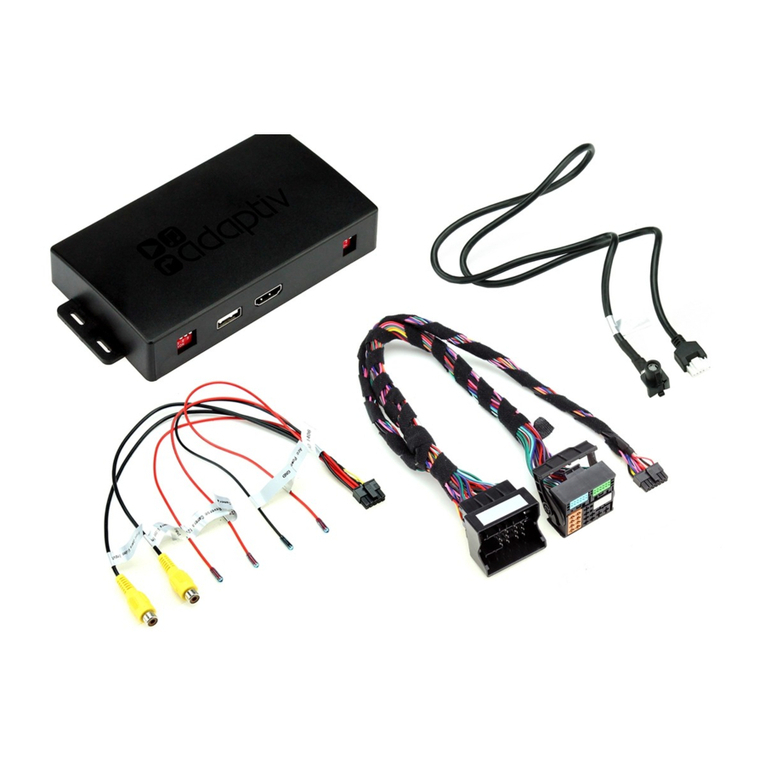
- 3 -
Installation and Wiring
IMPORTANT: (a) Read this manual thoroughly before proceeding to installation. You can also have the system
installed by a professional installer such as your local auto mechanic/auto electrician/car stereo store. (b) Turn off
the engine and ACC during installation. (c) Double check that all wiring is correct before powering on the system.
(d) During installation, avoid flatting, perforating, cutting, and extending the wires of sensors to reduce
unnecessary signal loss.
1. Installation of the Main Control Box
a) Find a flat and clean surface inside the vehicle close to driver's side taillight assembly as the main control box
gets its power from the back up light and has all the rear sensors plugged into it. For trucks, you may install it
inside the driver's side taillight assembly. Keep it away from areas of high heat, high humidity, direct water
contact, direct sunlight, and electromagnetic devices.
b) Place the main control box in place temporarily without securing it to the vehicle as you may need to adjust
the location of the main control box while wiring.
c) After completing all wiring, use the double-sided self-adhesive pad included to secure the main control box to
the vehicle.
2. Installation of the Wireless LED Digital Display
a) Find a place for the wireless display on top of the dashboard where the driver can see it easily. Place the
wireless display in place temporarily without securing it to the top of the dashboard.
b) After completing all wiring, secure it with the included self-adhesive pad on the bottom of the display base.
3. Wiring Power Supply to the Wireless LED Digital Display
There are two methods for powering the wireless display:
a) Method [1]: The wireless display comes with attached power cable and a cigarette lighter type plug. Simply
Insert the plug into the cigarette lighter jack.(Fig. 4).
b) Method [2]: If you want to route and hide the power cable of the display, you may cut off the cigarette lighter
type plug from the power cable, and wire the cable directly to ACC or "ON" block of the ignition switch. Strip
1" of the wires. Connect the red wire to +12V and the black wire to (-) negative or chassis ground. Wrap the
connections with vinyl electrical tape.
4. Wiring Power Supply to the Main Control Box
a) Insert the 3-pin plug of the power cable of the main control box into its socket labeled PWR on the side of the
main control box (Fig. 3).
b) Locate the +12V and the (-) negative wires from the back up light near the taillight assembly. If necessary,
remove the taillight assembly to locate them.
c) Strip 1/2" of the wires found.
d) Connect the red wire of the power cable to the +12V wire (Fig. 3)
e) Connect the black wire of the power cable to the (-) negative or chassis ground (Fig. 3).
f) Wrap the connections with vinyl electrical tape.
5. Installation of the Sensors
IMPORTANT: (a) To avoid false alert from the system detecting the ground, the sensors should be mounted
between 50cm to 80cm (20" to 32") above the ground and the face of the sensors need to be vertical or slightly
upward angled (Fig. 2). (b) Horizontally, the sensors should be equally spaced if possible or symmetric to the
center of the bumper. (c) The outer two sensors should be mounted about 15cm (5.9") from the corner of the
bumper for better corner coverage.
Note: The bumper surface for mounting the sensors should be as flat and vertical as possible.
a) Refer to Fig. 1 for mounting height and position of the sensors.
b) Work under the rear bumper to check the internal structure of it before marking the positions for drilling holes.
If the view is blocked, you may need to remove the bumper.
c) With chalk or marker, mark the position of sensors on the rear bumper. Make sure that the sensors can be
pushed all the way in and that you can feed the wires through.
d) Drill the holes through the bumper at the marks with the Φ21mm drill bit included. Note: if drilling through
metal bumper, use a bi-metal Φ21mm (13/16") drill bit (not included).
